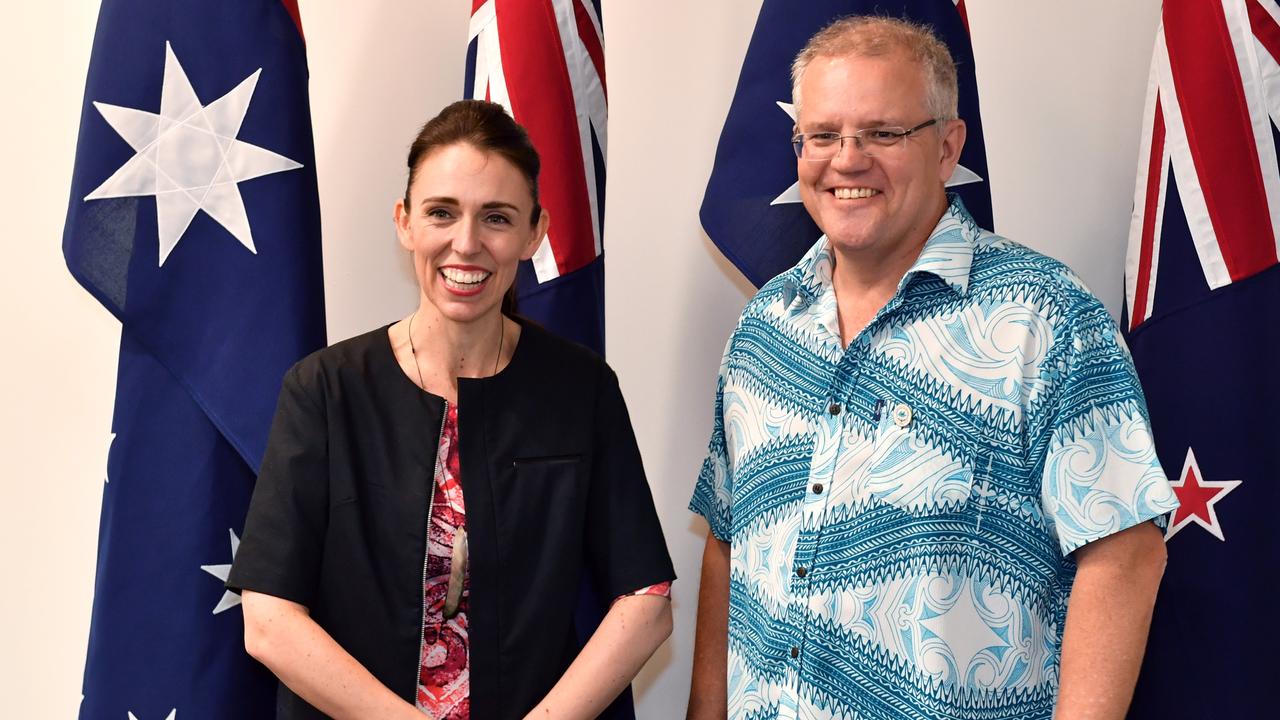When the luck runs out for the Lucky Country
Fans of the Matrix movies will be familiar with the way in which the lead character, Neo, leans back, seemingly defying gravity, while projectiles fly toward him.
Australia’s economy is much like Neo’s performance. Over the past 26 years, the country has managed to dodge an array of negative shocks from abroad. As a result, the current economic boom is the longest in its own history and, arguably, the longest period of expansion of any developed economy. Quite a feat.
In the movie, it turns out that Neo is capable of this partly because the rules of the game have changed — he is in a computer program, where gravity does not always apply — and he is also uniquely talented.
For economists, a big question is whether Australia is also “uniquely talented” or just lucky, having benefited from a world that has changed in its favour.
Of course, it would have been easy for Australia to have grown if the global economy had been stable over this period. This has not been the case.
Australia has had to cope with the Asian financial crisis in 1997-1998, the bursting of the tech bubble in 2000 and the big one: the global financial crisis of 2008-2009. Australia also avoided having a recession at the end of a leverage-fuelled housing price boom in 2002-2003, during a once-in-a-century drought in the early 2000s and at the end of the largest mining boom in its history, which peaked in 2011-2012.
Some of this has been luck. Proximity to fast-growing Asian economies and the gift of natural resources are clearly good fortune.
One reason Australia avoided recession after the GFC began in 2008 was a massive infrastructure spending program that China launched at the time, which drove Australia’s mining boom to new heights, supporting local growth. Australia was also fortunate at the end of the 2000s housing boom and during the drought as these broadly coincided with the early stages of the mining boom.
But luck only goes so far. If it were all luck, then Australia has been very lucky indeed. The statistics show that the average OECD economy has a recession every nine years. Australia’s 26 years of continuous growth is improbable.
A key factor has been economic flexibility. The increased flexibility came about largely due to reforms, mostly made in the 1980s and 1990s, which converted a closed and protected economy into an open, market-based one.
Trade barriers were lowered, the financial system and labour markets deregulated and the dollar floated.
The labour market has also proved highly flexible. For example, during the GFC businesses were more inclined than in the past to cut working hours rather than lay off staff. The recent slowdown in wages growth, which has occurred at the end of the mining boom, has supported more jobs growth than would otherwise have been the case.
Good economic management has also played a role. An independent central bank with a mandate to flexibly target inflation has proved to be an appropriate institutional arrangement for a medium-sized commodity producer. The RBA has adeptly managed the cycle, maintaining target inflation and financial stability and deserves credit for the long boom.
Although the GFC raised questions about the ability of market-based systems to deliver benefits, Australia stands out as a successful market-based economy.
But progress on reform has slowed to a standstill. Arguably, the last major reform was the introduction of the GST in 2000.
Lack of reform has contributed to a slowdown in productivity growth. It has also proved difficult to run balanced budgets, with the federal budget approaching its 10th straight year of deficit, despite the earlier boost to national income from the mining boom.
Eventually, Australia’s long boom will end. The trigger will most likely be a negative shock from overseas. A downturn in Asia would prove harder for Australia to deal with than the GFC.
Australia needs reform to support productivity growth and prepare for the next downturn. The priority should be fiscal reform that leads to sustained budget surpluses. Measures should include shifting the tax mix towards more efficient taxes, such as the consumption tax, and cutting back public spending commitments that do not deliver strong returns. Australia also needs reform to housing supply, energy and climate policy, and focus on infrastructure investment.
Unfortunately, the long boom may be contributing to the lack of impetus for reform as politicians and voters become complacent. Bipartisan support for reform in the 1980s and 1990s partly stemmed from the poor performance of the economy. Now, anyone under 42 has not experienced a recession in their working lives.
It would be disappointing to think that Australia might need a recession, with all its damaging effects, in order to motivate reform.
As we argue in a recent report, there may be lessons on how to achieve reform from the long boom itself. A deciding one is that Australia has clearly benefited from a key part of the policy apparatus that is used for managing the cycle and securing the economy — the RBA — being independent from the political process. With this in mind, perhaps policymakers ought to consider ceding more authority for reform of other areas, such as transport and social infrastructure, energy and tax policy, to independent agencies.
This could involve making recommendations by agencies such as the Productivity Commission, Infrastructure Australia or the Parliamentary Budget Office, more binding. The government could consider setting up an independent fiscal authority, akin to the Reserve Bank, but aimed at managing fiscal spending.
Without reform, Australia’s “unique talent” for avoiding recessions may wear thin.
Paul Bloxham is HSBC’s chief economist for Australia, New Zealand and global commodities.



To join the conversation, please log in. Don't have an account? Register
Join the conversation, you are commenting as Logout